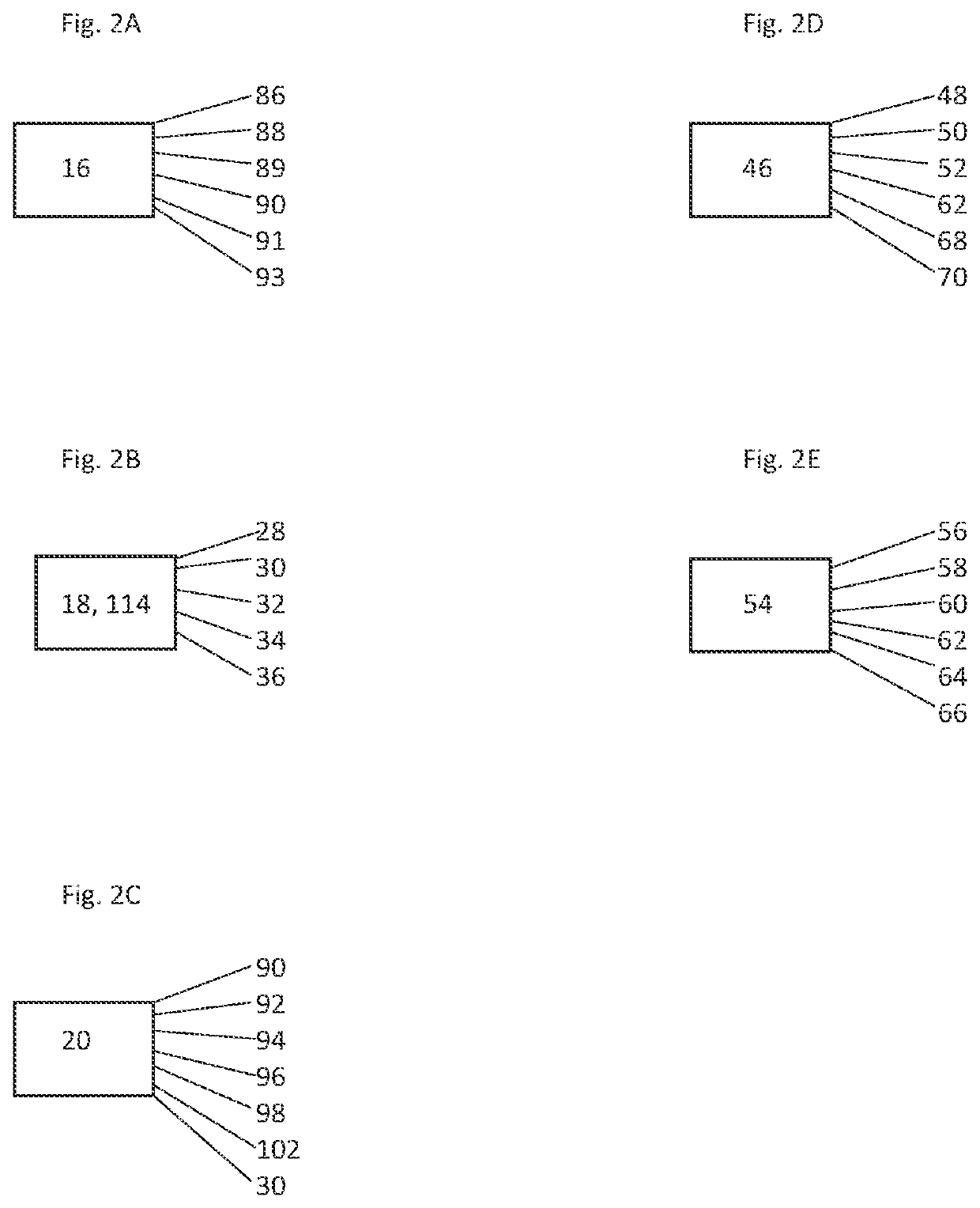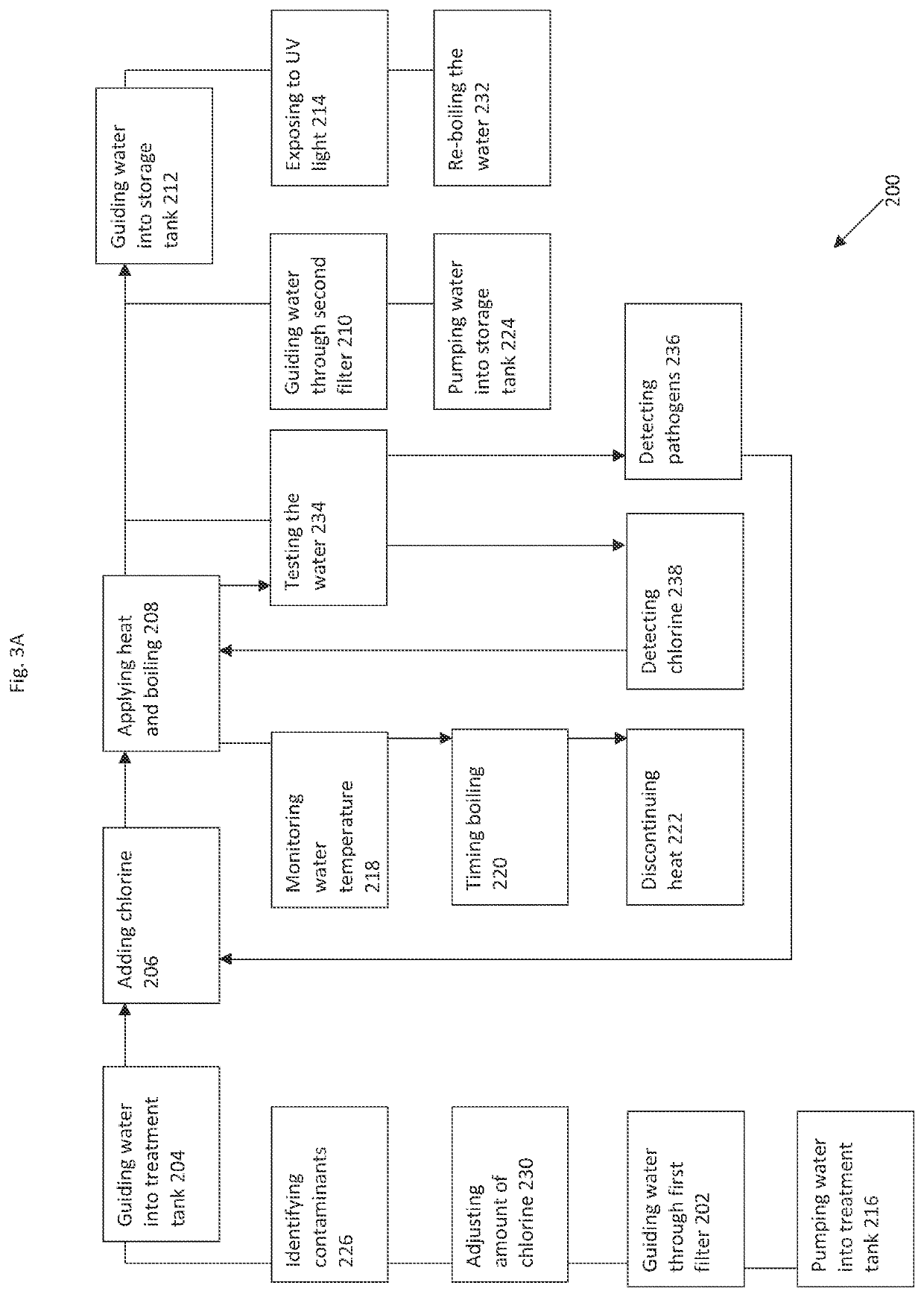System and method for water purification
a water purification system and water purification technology, applied in the field of water purification methods and systems, can solve the problem of occupying more spa
- Summary
- Abstract
- Description
- Claims
- Application Information
AI Technical Summary
Benefits of technology
Problems solved by technology
Method used
Image
Examples
Embodiment Construction
[0065]Referring first to FIG. 1, a block diagram of a preferred embodiment of system 10 of the present invention is provided. It is understood that system 10 as depicted includes all optional components so that every embodiment of system 10 is represented, but that not every component shown is required in more basic embodiments of system 10. System 10 includes water inlet 12; treatment tank 14; chlorine source 16; heating element 18; power source 20; treated water outlet 22; and storage tanks 24. It is understood that the block diagram portrays one possible configuration of system 10 and that it is not necessarily to scale. All configurations that include the required components of system 10 are considered to be within the scope of the present invention, regardless of their similarity or lack thereof to the configuration depicted herein.
[0066]Treatment tank 14 has a capacity of at least 300 gallons to match the capacity of the storage tanks 24, as discussed below. Treatment tank 14 ...
PUM
| Property | Measurement | Unit |
|---|---|---|
| volume | aaaaa | aaaaa |
| volume | aaaaa | aaaaa |
| volume | aaaaa | aaaaa |
Abstract
Description
Claims
Application Information
 Login to View More
Login to View More - R&D
- Intellectual Property
- Life Sciences
- Materials
- Tech Scout
- Unparalleled Data Quality
- Higher Quality Content
- 60% Fewer Hallucinations
Browse by: Latest US Patents, China's latest patents, Technical Efficacy Thesaurus, Application Domain, Technology Topic, Popular Technical Reports.
© 2025 PatSnap. All rights reserved.Legal|Privacy policy|Modern Slavery Act Transparency Statement|Sitemap|About US| Contact US: help@patsnap.com



